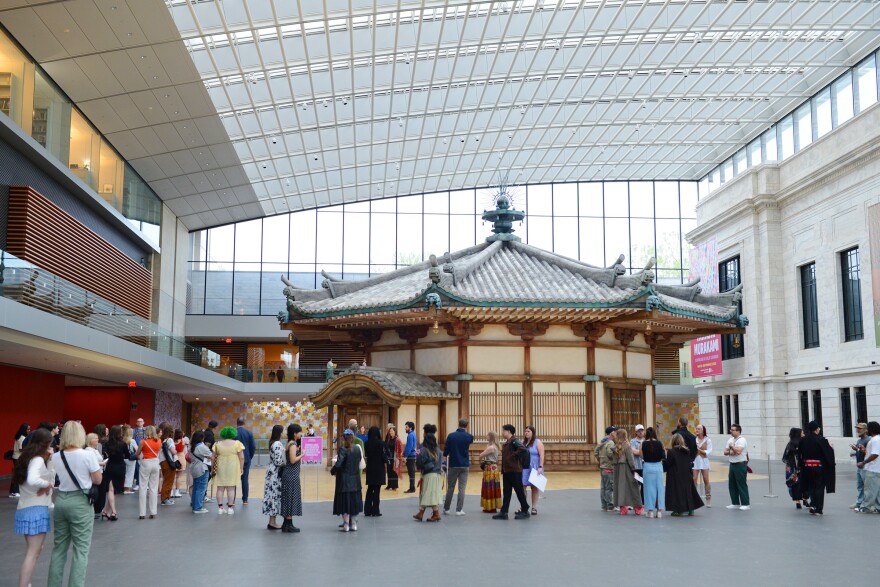Bright pinks, yellows and blues, along with walls of smiling flowers, offer an immediate invitation into the world of internationally renowned Japanese artist Takashi Murakami.
“Stepping on the Tail of a Rainbow” at the Cleveland Museum of Art explores themes of popular and consumer culture and draws inspiration from the worlds of anime and manga (comics and print cartoons) in Japan. The exhibit opens today to museum members, and to the public on May 25.
“Takashi Murakami is one of the most recognized and celebrated artists working today,” said Emily Liebert, the museum’s curator of contemporary art. “He combines traditions and styles from the world of fine art and from commercial culture, and he inspires us to ask questions about where the boundaries between one ends and the other begins.”
The exhibition, which originated at the Broad Museum in Los Angeles, has several additions created specifically for Cleveland, notably a magnificent Japanese temple that’s taken shape in the museum’s light-filled atrium.
“This big architecture, especially for this show, the installation is Dream Temple,” Murakami said. “The Japanese say Yumedono is a very historical kind of temple ... created for Japan [by] Prince of Shōtoku in the storyline of Japanese history.”
Murakami collaborated with designers from the TV series “Shōgun,” a historical drama set in 1600s Japan, to recreate the Yumedono for the exhibition in Cleveland.

Inside the structure, four floor-to-ceiling paintings emerge from the darkness, creating an immersive experience within the temple’s walls.
“Inside is four gods,” Murakami said. “It's the tiger and dragon and phoenix and the turtle. It came from Chinese mythology.”
With the Yumedono as the starting point, the exhibit continues through two large lower-level galleries, taking guests through colorful rooms filled with cartoon-like characters and ending with the artist’s most recent works.

“The starting point is my early works,” Murakami said. “It's Mr. DOB (a signature character created by Murakami) and like, flower stuff. It looks like very bright characters. And then go through the show, and the end of the room is very dark.”
In a gallery with black walls and low lighting, large-scale paintings explore themes of grief and human response to trauma.
A key example is Murakami’s 2014 painting from which the exhibit draws its name. “In the Land of the Dead, Stepping on the Tail of a Rainbow” was inspired by the 2011 earthquake and subsequent tsunami in Tohoku, Japan that also led to the Fukushima nuclear disaster.
Spanning the length of one of the galleries, the 82-foot-long painting is one of the most impressive in the exhibition, Liebert said, and is part of a larger series of works connected to that disaster.
“In this exhibition, works from those series are combined with early works that refer to Japan in the wake of World War II, as well as more recent works that refer to the COVID-19 pandemic,” Liebert said. “So the works in the show are united by connections to these three global crises.”
While Murakami’s work draws upon elements from traditional Japanese art and history, it’s still very much of the current moment, said Liebert, and creates a parallel to the museum’s extensive collection of Japanese art.
“With Murakami's art, we have an opportunity to carry forward in time historical narratives that are in, for example, our Japanese galleries,” Liebert said. “While our historical art in the museum's collection sheds new light on Takashi Murakami's art, his art allows us to see our historic collections in new ways.”
“Stepping on the Tail of a Rainbow” continues through Sept. 7.











